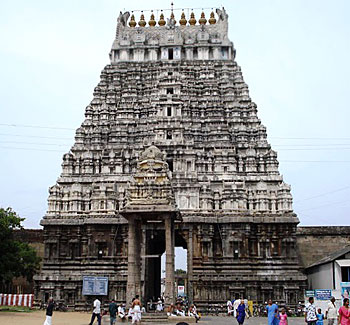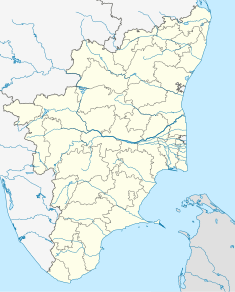Deeksha Panth Latest Cute Photos
Geography
The temple is located on the banks of the Vedavathi River at the western limits of the Kanchipuram. It faces east. Its location, demarcated according to the religious faiths, is in one of three "Kanchis", the Shiva Kanchi; the other two Kanchis are, Vishnu Kanchi and Jain Kanchi. It is 75 kilometres (47 mi) from the Chennai, the capital city of Tamil Nadu.[6] Kailasanathar is one of several notable temples in Kanchipuram, the others being Ekambaranatha, Kachapeshwarar, Kamakshi Amman, Kumarakottam Temple, and Varadaraja Perumal.History
The Kailasanathar Temple (meaning:“Lord of the Cosmic Mountain”), is built in the tradition of Smartha worship of Shiva, Vishnu, Devi, Surya , Ganapathi and Kartikeya, in Hinduism, a practice which replaced the Buddhism.Temple construction is credited to the Pallava dynasty who had established their kingdom with Kanchipuram as the capital city, considered one of the seven sacred cities under Hinduism. There was an interregnum when the Chalukya rulers defeated the Pallavas and occupied Kanchipuram. However, the Pallavas regained their territory and started expanding their capital city of Kanchipuram and built many temples of great magnificence. The only temple of this period which is extant is the Kailsahanathar Temple.
It is the first structural temple built in South India by Narasimhavarman II (Rajasimha), and who is also known as Rajasimha Pallaveswaram. His son Mahendravarman III, completed the front façade and the gopuram (tower). Prior temples were either built of wood or hewn into rock faces in caves or on boulders, as seen in Mahabalipuram. The Kailasanathar temple became the trend setter for other similar temples in South India. According to local belief, the temple was a safe sanctuary for the rulers of the kingdom during wars. A secret tunnel, built by the kings, was used as an escape route and is still visible.
The temple has gone by other names such as Kachipettu Periya Thirukatrali (meaning: Stone Temple of Kachipettu, the old name for the present day Kanchipuram) when Rajaraja Chola I of the Chola Dynasty paid a visit to this temple. Inspired by the architecture of this temple, he built the Brihadeeswarar Temple in Thanjavur. Currently, Kanchi Kailasanathar Temple is maintained by Archaeological Survey of India.
Architecture
The temple complex is complete in all respects as it has garbagriha (sanctum sanctorum), antarala (inner enclosure), mandapa, a high compound wall, and an entrance gate, the gopuram. The mandapa, which was initially detached, was made part of the main shrine by interposing an ardhamantapa (smaller hall). The pillars of the mandapa have the repetitive features of mythical lion mounts.
The structure has a simple layout with a tower or shikara at the center of the complex. The shikara of the temple, above the main shrine (sanctum sanctorum), is square in plan and rises up in a curvilinear style or pyramidal shape. The tower has many levels rising proportionately.At the top of this tower, there is a small roof in the shape of a dome. The pillar elements with mythical animal shapes (lions on the base) are extra features in Pallava style. At the entrance, the gopuram walls are plastered. Its entrance wall has eight small shrines and a gopura, precursor to the main gopura. At some later stage, the mandapa and the sanctuary were joined by an intermediate hall called the ardhamantapa, which is reported to have marred the beauty of the temple to some extent. The temple is enclosed within walls in a rectangular layout.
Shrines
The main shrine has a 16 sided Shivalinga in black granite stone deified in the sanctum sanctorum. Within the walls of the main shrine there is padabhanda adhisthana (main pedestal) with very elegantly carved images of gods with a sculpted Nandi, a little distance away giving guard to the deity. On each face of the outer walls of the main shrine there are many carvings of gods and goddesses. In the south facing wall the sculpture depicts Shiva as Umamaheshavara with Varaha (incarnation of Vishnu as a boar) raising the linga, flanked by Brahma and Vishnu and flying amaras at the lower level. The west facing hall has sculptures of Shiva in the form of Sandhya Tandavamurti and Urdhava Tandvamurti and the ensemble is completed with images of ganas in dancing poses and also with images of Brahma, Vishnu, Nandi and Parvathi. The carving of Shiva on the north facing wall is a composition of Tripurantaka flanked by three ganas, goddess Durga with three ganas, and Bhairavi, Kaushiki and Jyestha. The exterior faces of the vimana (tower) have images of Bhikshatana, Somaskanda and Shiva in Samhara-Tandava (destructive dancing) pose. In the inner walls of the prakara (circumabulatory passage) there is galaxy of images of Durga, Skanda, Bhavati, Tripurantaka, Garudarudha-Vishnu, Asura Samhara (slaying of demons), Narasimha Vishnu (Vishnu in the incarnation of lion faced man), Trivikrama, Shiva Tandava (Shiva in a dancing pose), Shiva severing the fifth head of Brahma, desecration of Yagna of Dakhsa, Brahma and his wife, Gangadhara, Urdhava tandava, Vishnu flanked by Bhudevi and Sridevi, Lingodhbava (emergence of linga), Bhikshatana, Ravana, and Vali offering prayers to Atmalinga Chandikeshvara. Vimana's south facing wall has very elegant image of Shiva in a sitting posture of peace and quietude known as Dakhshinamurti, and its west wall has Shiva in the form of Lingodhbava.The tower has multiple shrines embodied on all its external faces which have the appearance of miniature shrines. These shrines have three features, the sala (rectangular), kuta (square) and panjara (apsidal) styles. Eight small shrines also decorate the entrance wall. The 58 small shrines are built into the niches of the compound wall that encloses the main shrine; they depict Somaskanada reliefs of Shiva and his consort Parvathi in many dance forms.
Other features
The outstanding feature of sculptures is the profusion of depiction of the erect lions projecting out in several directions.There are two sculptures of Shiva here which are seen holding the Veena] (musical string instrument) in the hand. There is a lot of difference between the Veena found in the said sculptures and the present day Veena. There are also beautiful sculptures of Mathahvialasa Prakshanam. The temple also has the earliest stone inscription records of the twenty eight Saivagamas (Shaiva saints) in which the Pallava King Rajasimhavarman states his faith in Shaivism. The murals on the inner walls are well preserved.Circumambulatory passage
A circumambulatory passage, with a symbolic meaning is situated along the compound wall. In order to make the circumambulation, there is a narrow entry passage which devotees must crawl through. Seven steps must be climbed in order to reach the passage. Passing through the narrow passage is indicative of passage through life. After the circumambulation, the exit is through a pit or another narrow passage symbolic of death. It is believed that making the circumambulation round the various deities would usher the same blessings as visiting paradise.Festival
Maha Shivaratri is the biggest festival held in the temple when thousand of devotees throng the temple in the evening hours to offer prayers to the main deity.Kailasanathar Temple Raja Simha, the father of Mahendravarman built this ancient temple in 81th Century A.D and later completed it. It is built in the typical Pallava style, with a pyramidal tower, a pillared hall and vestibule, enclosed by a wall. The temple is famous for exquisite carvings and attracts devotees and tourists alike. There are 58 small shrines situated around the main shrine, as a compound wall. Fresco style paintings adorn the inner walls of the temple.






























No comments:
Post a Comment